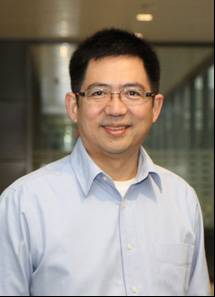SEMINAR
The State Key Lab of
High Performance Ceramics and Superfine Microstructure
Shanghai Institute of Ceramics, Chinese Academy of Sciences
中 国 科 学 院 上 海 硅 酸 盐 研 究 所 高 性 能 陶 瓷 和 超 微 结 构 国 家 重 点 实 验 室
From nano to micro, and back:
explore the porphyrin supramolecular chemistry for cancer imaging and therapy
Speaker
Prof. Gang Zheng
E-mail: gang.zheng@uhnres.utoronto.ca
Department of Medical Biophysics, University of Toronto
时间:2015年07月10日(星期五)上午 10:00
地点: 2号楼607会议室 (国家重点实验室)
欢迎广大科研人员和研究生参与讨论!
联系人:施剑林(2712)、步文博(2610)
Biodata:
 Dr. Zheng is a Professor of Medical Biophysics, Biomedical Engineering and Pharmaceutical Sciences at the University of Toronto, a Senior Scientist, the Joey and Toby Tanenbaum/Brazilian Ball Chair in Prostate Cancer Research at the Princess Margaret Cancer Center, and the Scientific Lead for Nanotechnology and Radiochemistry at the Techna Institute. He received his PhD in 1999 from SUNY Buffalo in Medicinal Chemistry. Following two year postdoctoral training in photodynamic therapy at the Roswell Park Cancer Institute, he joined the University of Pennsylvania in 2001 as an Assistant Professor of Radiology, where he established the molecular imaging chemistry program and introduced photodynamic molecular beacons and lipoprotein-like nanoparticles. Since moving to Canada in 2006, his research has been focused on developing clinically translatable technology platform to combat cancer including the porphysome nanotechnology, which was named one of the “top 10 cancer breakthroughs of 2011” by the Canadian Cancer Society. Dr. Zheng currently serves as the Principal Investigator for 10 research grants (total $15 million) including a Canada Foundation for Innovation Nanomedicine Fabrication Center and a CIHR Emerging Team Grant on Nanomedicine. Dr. Zheng is an Associate Editor for the Bioconjugate Chemistry.
Dr. Zheng is a Professor of Medical Biophysics, Biomedical Engineering and Pharmaceutical Sciences at the University of Toronto, a Senior Scientist, the Joey and Toby Tanenbaum/Brazilian Ball Chair in Prostate Cancer Research at the Princess Margaret Cancer Center, and the Scientific Lead for Nanotechnology and Radiochemistry at the Techna Institute. He received his PhD in 1999 from SUNY Buffalo in Medicinal Chemistry. Following two year postdoctoral training in photodynamic therapy at the Roswell Park Cancer Institute, he joined the University of Pennsylvania in 2001 as an Assistant Professor of Radiology, where he established the molecular imaging chemistry program and introduced photodynamic molecular beacons and lipoprotein-like nanoparticles. Since moving to Canada in 2006, his research has been focused on developing clinically translatable technology platform to combat cancer including the porphysome nanotechnology, which was named one of the “top 10 cancer breakthroughs of 2011” by the Canadian Cancer Society. Dr. Zheng currently serves as the Principal Investigator for 10 research grants (total $15 million) including a Canada Foundation for Innovation Nanomedicine Fabrication Center and a CIHR Emerging Team Grant on Nanomedicine. Dr. Zheng is an Associate Editor for the Bioconjugate Chemistry.
Abstract:
Porphyrins are aromatic, organic, light-absorbing molecules that occur abundantly in nature, especially in the form of molecular self-assemblies. In 2011, we first discovered ‘porphysomes’, the self-assembled porphyrin-lipid nanoparticles with intrinsic multimodal photonic properties. The high-density porphyrin packing in bilayers enables the absorption and conversion of light energy to heat with extremely high efficiency, making them ideal candidates for photothermal therapy and photoacoustic imaging. Upon nanostructure disruption, fluorescence and photoreactivity of free porphyrins are restored to enable low background fluorescence imaging and activatable photodynamic therapy. Metal ions can be directly incorporated into the porphyrin building blocks of the preformed porphysomes thus unlocking their potential for PET and MRI, making them a true “one-for-all” nanoplatform. We have validated porphysomes’ multimodal theranostic utilities in different cancer types (prostate, ovarian, head & neck, pancreatic and brain cancer), tumor models (subcutaneous, orthotopic, chemically-induced and primary) and animal species (mice, hamsters and rabbits). By changing the way porphyrin-lipid assembles, we developed porphyrin lipoprotein nanoparticles (20nm), trimodal (ultrasound/photoacoustic/fluorescence) porphyrin shell microbubbles (~2um), microscopy-controlled porphyrin protocells (10-100um), and hybrid porphyrin-gold nanoparticles, thus expanding the purview of porphyrin nanophotonics. Most recently, we discovered that porphyrin microbubbles could be converted in situ by ultrasound into nanoparticles and visualized optically within tumor. Bursting the microbubbles with ultrasound would increase the permeability of the vasculature, while forming and delivering porphyrin nanoparticles to the tumor, then used for imaging or therapy. Therefore, there is no dependence on the enhanced permeability and retention effect to deliver the nanoparticle. By closing the nano-micro-nano loop, the simple yet intrinsic multimodal nature of porphyrin-based cancer theranostics represents a new frontier for cancer imaging and therapy.
References:
1. Lovell, J.F.; Jin, C.S.; Huynh, E.; Jin, H.; Kim, C.; Rubinstein, J.L.; Chan, W.C.W.; Cao, W.; Wang, L.V. & Zheng, G*. “Porphysome Nanovesicles Generated by Porphyrin Bilayers for use as Multimodal Biophotonic Contrast Agents.” Nature Materials, 2011, 10, 324-332.
2. Huynh E., Leung B.Y.C, Helfield B.L., Shakiba M., Gandier J., Jin C.S., Master E.R., Wilson B.C., Goertz D.E. & Zheng, G*. “In Situ Conversion of Porphyrin Microbubbles to Nanoparticles for Multimodality Imaging”. Nature Nanotechnology, 2015,10, 325–332.


 沪公网安备 31010502006565号
沪公网安备 31010502006565号